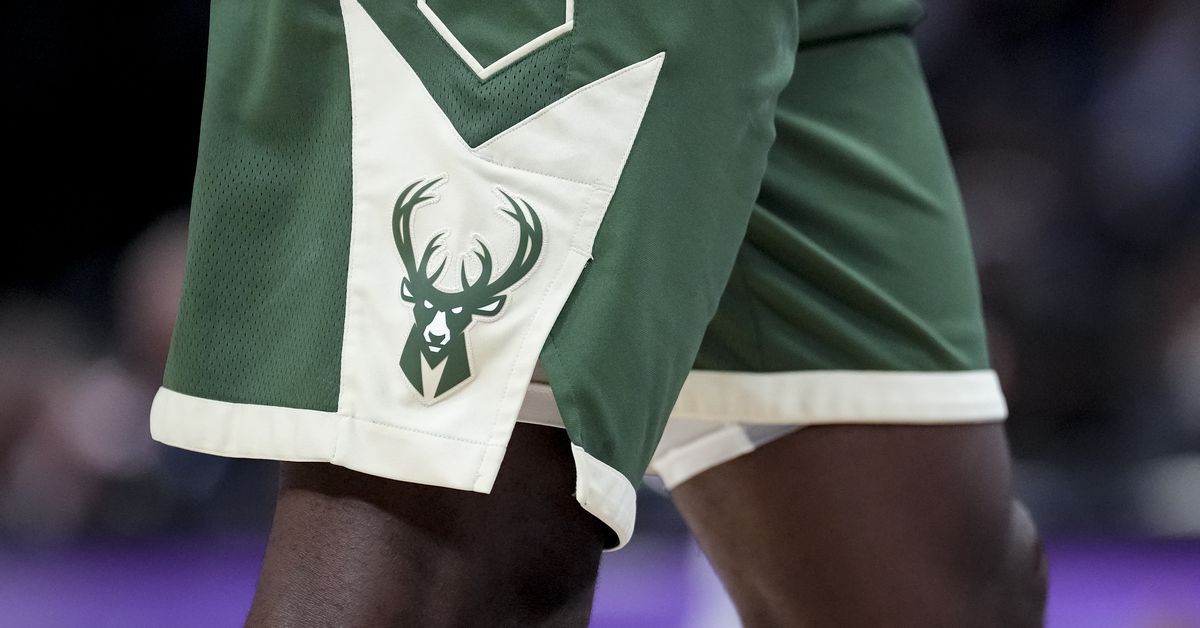I have a weekly event called BH; you can guess what that means. It contains a running list of half-baked article ideas that are at least tangentially related to the event. Milwaukee BucksSome ideas are deleted when they are turned into articles, but some remain in an ever-growing list.
It’s become too long.
The solution: lower the barrier to entry and share an assortment of shorter, still-warm shots.
Without further ado, let’s clean out the junk drawer.
Hidden Statistics
It’s March 24, 2023. (For example, the necessary junk drawer cleaning.) The Bucks visit the Jazz in Salt Lake City. In the first 30 seconds of the game, Brook Lopez recorded his first block of the night, on Ochai Agbaji’s 8-foot shot.floating driving shot” (precise work, NBA!). After a minute of play, Lopez blocks Walker Kessler’s dunks on two consecutive possessions, bringing his total to three (!) after five Jazz possessions (!) in two minutes (!). And he adds another block on a Simone Fontecchio running layup at 8:48. He will finish with a total of seven blocks, with two more in the third quarter and the last in the final stanza.
What did those seven blocks mean? For starters, they thwarted seven scoring chances for the Jazz. Yet blocks are a two-man affair: They require Brook to block the ball, but they also require the opponent to be brave enough to shoot over him. After four blocks in four minutes, the Jazz were less brave. In other words, simply blocking the ball threat of a block also prevents scoring opportunities.
When looking at statistics, it is important to understand what is quantified and what is hidden. Blocks, as a quantifiable unit, have an impact. Blocks that don’t do it occur, as an unquantifiable unit, also have an impact.
Ring-Based Assessments, Part 1: Coaches
Mike Budenholzer won just one title in five years in Milwaukee. He was fired in part because of his inability to win at least one more title during that span.
Doc Rivers won only one ring in his many years in the NBA. His drafting was criticized in part because it was thought he should have won more.
Evaluating coaches based on their rings hurts my heart for a number of reasons. Coaches don’t put the ball in the hoop. They have to work with what they have, which is often not championship quality. Luck plays a big part in winning four straight series in seven games. Perhaps most importantly, only one team wins a championship every year. Many players win a championship every year, but only one head coach does.
Only four coaches — Gregg Popovich, Erik Spoelstra, Steve Kerr and Michael Malone — were hired before 2019. Of the 30 NBA teams, 13 hired a new coach this year or last. Are NBA coaches really that bad, or do these numbers suggest they are unfairly evaluated, in part based on the rings they win?
Margins Part 1: An Explosion
Throughout the playoffs, I was surprised by the number of landslide victories. Focusing on the Bucks, Milwaukee won Games 1 and 5 by 15 and 23 and Indiana won Games 2, 4 and 6 by 17, 13 and 22, with the only exception being the thriller Game 3 in which the Pacers won by 3 points.
So I wondered if the average margin of victory in the NBA was increasing. This Reddit thread I used data from Basketball Reference to show that the average margin of victory was 11.09 points per game ten years ago. I did the same for last season, finding that the average margin of victory has increased slightly (ha) by about 1.5 points from ten years ago, to 12.58 points per game. It’s a small jump, and I only compared two seasons, but it suggests that my hunch is not unfounded.
I think this shift can be attributed primarily to the NBA’s increased reliance on three-pointers. Three-pointers involve more points than two-pointers (a hard-hitting analysis, I know). As a result, they can be responsible for greater differences in outcomes: the difference between a team making a shot and one missing it is greater. As Bucks fans, we’re well-accustomed to this experience: just think of every Bucks game where the opponent is shooting wildly and the Bucks can’t touch the side of a barn.
Overall, this change could make the NBA experience a little less exciting, as fewer games will be competitive. Still, while three-pointers contribute to higher margins, they can also make it easier to comeback from those same margins. That’s just the way it is.
Ring-Based Ratings, Part 2: The Players
In one of Riley Feldmann’s recent MMMRs (I can’t remember which one), there’s the idea that the evaluation of player greatness based on championships might need to be adjusted given the NBA’s increasing parity. The number of unique championship-winning teams per decade has been steadily increasing for some time: four in the ’90s, five in the ’00s, seven in the ’10s, and already five unique champions in all five years of the ’20s. While some of this parity may be due to star players increasingly switching teams, dynasties do indeed seem less likely these days. (In any case, ring-based evaluations are hard on players, not just coaches.)
Margins Part 2: Defeating Goliath, Not David?
Beat the teams you should beat, compete with the teams you should compete with. It’s a simple adage, but it sometimes feels like the Bucks fail to live up to it: They bravely take on top-tier opponents, but struggle to hold their own against their opponents.
To dig deeper, I analyzed some numbers from last season (again, basic stuff from Basketball Reference). I didn’t want to establish a baseline for how often the Bucks should beat opponents of varying quality, so instead I looked at their opponents’ winning percentages relative to other stats.
Interestingly, I found that opponent winning percentage didn’t really matter for the 2023-24 Bucks: it didn’t significantly affect whether the Bucks won, how much the Bucks won, or how much the Bucks lost (although it was consistent with what we expected, in that the Bucks were more likely to lose to better teams, lose to them by more points when they won, and beat them by fewer points when they lost). This lends some credence to my hunch: if the Bucks play better against better opponents and worse against worse opponents, it makes sense that the results would be similar across all levels of opposition.
The glass half empty is that they play worse against bad teams. The glass half full is that they play well against good teams. At least they are consistent!
MarJon Beauchamp’s Deep Dive into the Future Based on the Nearly Two-and-a-Half Hour Series Holy Child Posted on YouTube
Yes, MarJon Beauchamp has a YouTube account. Yes, he has a series called Holy Child. Yes, the current two episodes are nearly two and a half hours long in total. Yes, I had planned to watch them all.
Maybe one day I will, but it’s a tough watch. The first episode starts with a decent montage of the struggles he faced and his selection by the Bucks. It then shows highlights of his 83-point game in any tournament, which apparently means something. He then talks to various players who are better than him, and at that point I stopped watching (about two minutes in).
As a PhD in communications, I can attest with expertise that it’s always important to know your audience. Who is MarJon’s audience? Based on the 90 comments on Episode 1, he’s preaching to the converted. Same story for Episode 2, though an account with the suspicious name Ril3y_34 briefly spoiled the party: “Y’all gotta play better defense, man, goddammit.” Wise words.
Overall, this documentary highlights his impressive but ultimately unimportant resume to those around him. To those around him, however, he is just a third-year player who has been invited back to the Summer League.
As for his future? The first two episodes were released 11 and 7 months ago, suggesting he doesn’t believe he’s reached the Holy Trinity yet.
And that’s it! Feel free to share your thoughts below, especially if you’d like me to explore any of the above points further in a standalone article.

